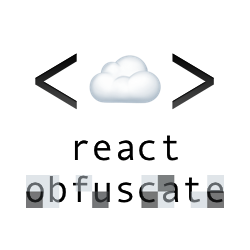Live demo: react-obfuscate.coston.io
The user passes the contact link as an email, tel, sms, facetime, or href prop. The component obfuscates href data until a hover, click, or focus event. Links are given their proper URL schemes (mailto, facetime, etc.) The link is rendered in reverse in the dom, but reversed again with css. This making the link useless for spammers, but user friendly on screen.
The world needs obfuscated links that display the link in a friendly way.
npm install --save react-obfuscateimport React from 'react';
import Obfuscate from 'react-obfuscate';
export default () => (
<p>
Phone: <Obfuscate tel="205-454-1234" />
<br />
Email:{' '}
<Obfuscate
email="[email protected]"
headers={{
cc: '[email protected]',
bcc: '[email protected]',
subject: 'react-obfuscate',
body: 'Down with the machines!',
}}
/>
</p>
);<p>
Phone:
<a href="obfuscated" style="direction: rtl; unicode-bidi: bidi-override;"
>4321-454-502</a
><br />
Email:
<a href="obfuscated" style="direction: rtl; unicode-bidi: bidi-override;"
>oi.notsoc@olleh</a
>
</p><p>
Phone: <a href="tel:205-454-1234">205-454-1234</a><br>
Email: <a href="mailto:[email protected]?cc=kate%40acidburn.af&bcc=tanderson%40metacortex.net&subject=react-obfuscate&body=Down%20with%20the%20machines!">[email protected]</a>
</p>| Prop | Type | Default | Description |
|---|---|---|---|
email |
string |
null |
email address of the intended recipient |
headers |
object |
null |
subject, cc, bcc, body, etc |
tel |
string |
null |
telephone number of the intended recipient |
sms |
string |
null |
sms number of the intended recipient |
facetime |
string |
null |
facetime address of the intended recipient |
href |
string |
null |
Obfuscate any other URL type (e.g. WhatsApp) |
| Prop | Type | Default | Description |
|---|---|---|---|
linkText |
string |
'obfuscated' |
add custom pre-interaction href attribute placeholder text |
obfuscate |
boolean |
true |
set to false to disable obfuscation |
obfuscateChildren |
boolean |
true |
set to false to disable obfuscation of children |
element |
string |
'a' |
use if you want to override the default a tag |
onClick |
function |
null |
called prior to setting location (e.g. for analytics tracking) |
npm startreact-obfuscate is an inline element. Using consecutive inline elements inside a block element causes an issue with the bidi-override reversal on Chrome. To prevent this,
add any text between the elements, wrap <Obfuscate/> with another element (like <span>), or add style={{display:'inline-block'}} to prevent any issues.
Example Case:
<address>
<Obfuscate style={{ display: 'inline-block' }} email="[email protected]" />
<br />
<Obfuscate style={{ display: 'inline-block' }} tel="+69 111 222 333" />
</address>With the element prop, users can obfuscate any element, like paragraphs or headers. Changing the dom element also removes the href and onClick props. Custom styling is required due to handling of right-to-left direction styles. Usually, adding style={{textAlign:'left'}} will suffice.
Example Case:
<Obfuscate element="p" style={{ textAlign: 'left' }}>
This paragraph is more secret than others.
</Obfuscate>By default, objects are not reversed in the dom, but other types are. The obfuscateChildren prop set will disabled this functionality when set to false. If the child is an object, like html elements are, it will be rendered normally.
<Obfuscate email="[email protected]" aria-label="Email Me">
<svg width={24} height={21}>
<path
fill="#000"
d="M12 12.713L.0 3h23.97L12 12.713zm0 2.574L0 5.562V21h24V5"
/>
</svg>
</Obfuscate>react-obfuscate is awesome thanks to these community members:
Please help make this react component better. Feel free to submit an issue, or contribute through a pull request.
Licensed under the MIT license.


